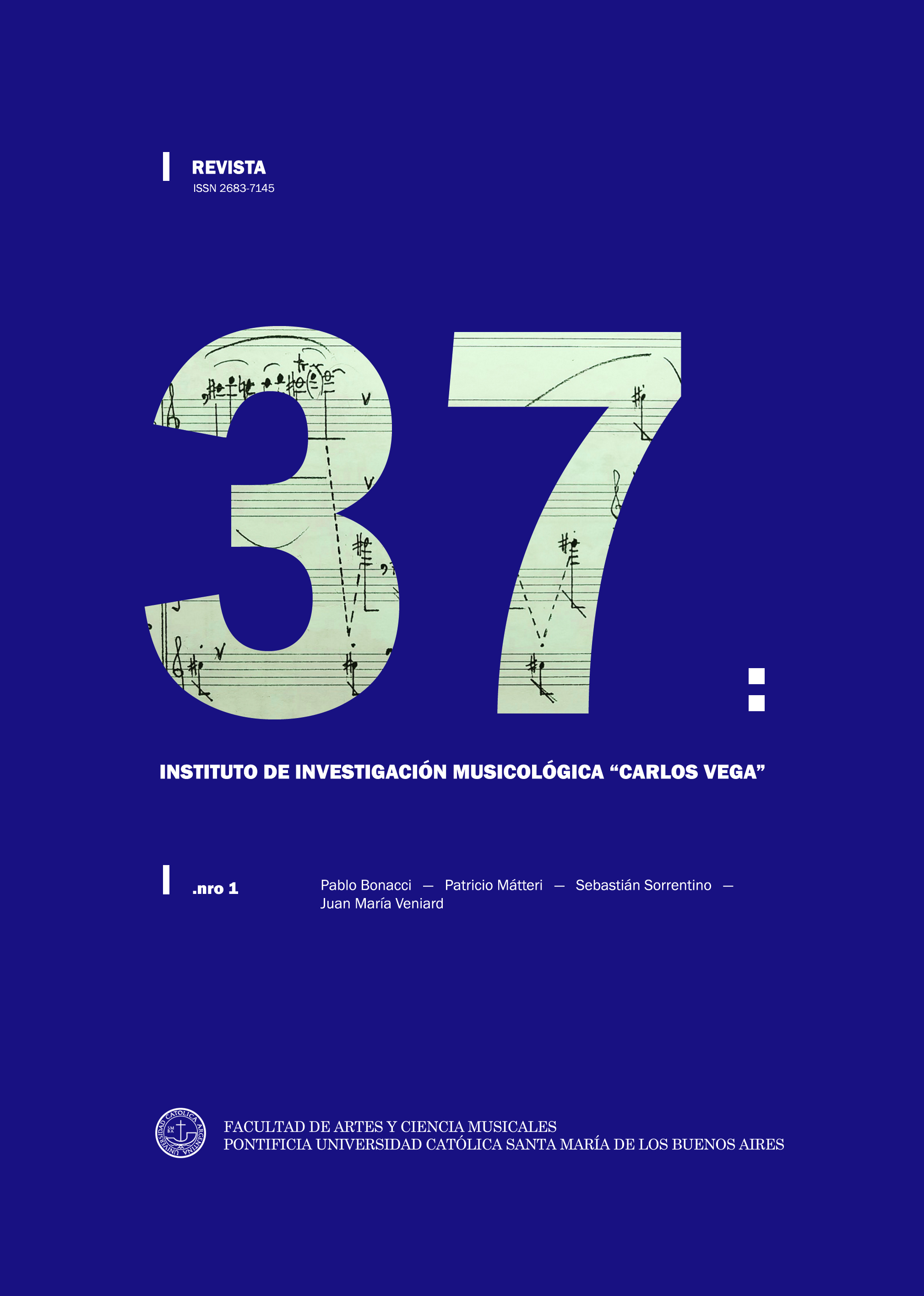Parallel fifths and octaves: a structural approach to a pedagogical proble
Keywords:
Schenker, counterpoint, analysis, parallel fifths, parallel octaves, harmonyAbstract
In this article, a discussion is carried out regarding the occurrence of consecutive fifths and octaves in the repertoire of common practice. A critical review of Heinrich Schenker's structural theory is proposed to investigate its utility in analyzing anomalous phenomena in voice leading and to identify resources that can provide systematic explanations for a non-normative phenomenon within the rules of counterpoint.
Downloads
References
Cadwallader, A. y Gagner, D. (1998). Analysis of Tonal Music: A Schenkerian Approach. Oxford University Press.
Cutler, T. (2019). Bending the Rules of Music Theory: Lessons from the Great Composers. Routledge.
Cherubini, L. (1854). A Treatise on Counterpoint & Fugue (Trad. M. C. Cowden). Novello and Company.
Drabkin, W. (2001). “Consecutive Fifths, Consecutive Octaves”. En The New Grove Dictionary of Music and Musicians. Macmillan.
Forte, A. y Gilbert, S. (1982). Introduction to Schenkerian Analysis. W.W. Norton & Company.
Fux, J. J. (1965). The Study of Counterpoint: Gradus Ad Parnassum (Trad. A. Mann). W.W. Norton & Company.
Gauldin, R. (1997). Practica Armónica en la Música Tonal (Trad. B. Zitman). Akal.
Helmholtz, H. (1875). On The Sensation of Tone (Trad. A. Ellis). Longmans, Green, and Co.
Kennan, K. (1999). Counterpoint. Prentice Hall.
Kostka, S. y Payne, D. (1997). Tonal Harmony. McGraw.
Mast, P. (1971). “Brahms´s Study, Octave u. Quinten u. A. with Schenker’s commentary translated”. The Music Forum. Vol V.
Piston, W. (1970). Counterpoint. Victor Gollancz LTD.
Piston, W. (1959). Harmony. W.W. Norton & Company.
Riemann, H. (1974). Harmony Simplified. Augener Limited London.
Rimsky-Korsakov, N. (1997). Tratado Practico de Armonía (Trad. M. Fischer y J. Fischer). Ricordi.
Salzer, F. y Schachter, C. (1989). Counterpoint in Composition. Columbia University Press.
Schenker, H. (1933). Johannes Brahms Oktaven und Quinten. Universal Edition.
Schenker, H. (1954). Harmony (Trad. E. Borgese Mann). Oxford University Press.
Schenker, H. (1977). Free Composition: Volume II of New Musical Theories and Fantasies (Trad. E. Oster). Pendragon Press.
Schenker, H. (2001). Counterpoint: A translation of Kontrapunkt Book I (Trad. J. Rothgeb y J. Thym). Musicalia Press.
Schenker, H. (2001). Counterpoint: A translation of Kontrapunkt Book II (Trad. J. Rothgeb y J. Thym). Musicalia Press.
Schoenberg, A. (1990). Ejercicios Preliminares de Contrapunto (Trad. M. A. Centenero Gallego). Editorial Labor S.A.
Tchaikovsky, P. (1900). Guide to Practical Study of Harmony (Trad. E. Krall y J. Liebling). Leipzig.
Downloads
Published
How to Cite
Issue
Section
License
Copyright (c) 2024 Sebastián Sorrentino

This work is licensed under a Creative Commons Attribution-NonCommercial-ShareAlike 4.0 International License.





 e-ISSN 2683-7145 | ISSN 1515-050X
e-ISSN 2683-7145 | ISSN 1515-050X